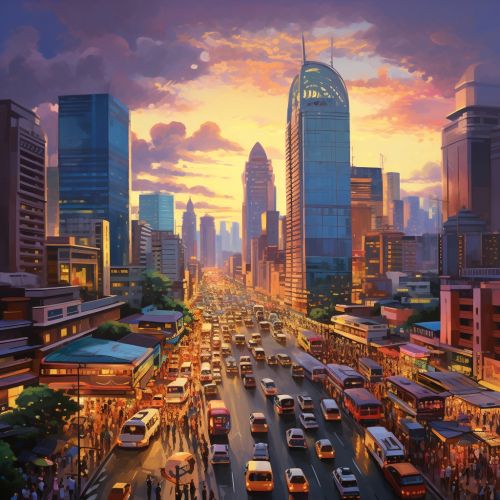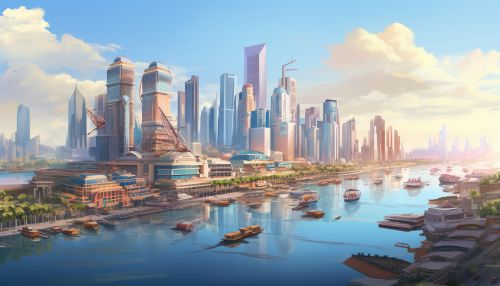Economy of the Philippines
Overview
The Philippine economy is the world's 36th largest by nominal GDP according to the International Monetary Fund. It is classified as a newly industrialized country and an emerging market. The Philippines is one of the emerging markets and is the sixth richest in Southeast Asia by GDP per capita values, after the regional countries of Singapore, Brunei, Malaysia, Thailand and Indonesia.


History
The economic history of the Philippine Islands had been traced back to the pre-colonial times. The country which was then composed of different kingdoms and thalassocracies oversaw the large number of merchants coming to the islands for trade. Indian, Arab, Chinese and Japanese merchants were welcomed by these kingdoms, which were mostly located by riverbanks, coastal ports and central plains. The merchants traded for goods such as gold, rice, pots and other products.
Structure
The Philippine economy is structured much like that of developed countries. Services dominate the economy, followed by the industrial sector and agriculture. Ownership of the corporations in the Philippines is dominantly Filipino as mandated by law. The government has a role in shaping the economic activity through fiscal and monetary policy. It also collects, spends, and manages public resources.
Sectors
The economy of the Philippines is organized into the following sectors: agriculture, industry, and services.
Agriculture
Agriculture employs 30% of the Filipino workforce as of 2014, according to the World Bank. The Philippines is the 8th largest rice producer in the world, accounting for 2.8% of global rice production. The Philippines was also the world's largest rice importer in 2010.
Industry
Industrial sector in the Philippines is diversified, with manufacturing, mining, and construction as the top three sub-sectors. The manufacturing industry contributes nearly a quarter of the country's GDP and employs around 16% of the total labor force.
Services
The service sector in the Philippines has grown significantly over the years, contributing the largest percentage to the GDP. The sector is dominated by the call center industry, followed by finance, real estate, and tourism.
Trade
The Philippines is a member of the WTO, the ASEAN, and other trade organizations. The country's export includes semiconductors, electronic products, transport equipment, garments, copper products, petroleum products, coconut oil, and fruits.
Challenges
Despite the positive growth of the Philippine economy, it still faces several challenges. These include infrastructure deficits, a high poverty rate, high unemployment, and underemployment rates, and a high level of debt, among others.
Future
The future of the Philippine economy is promising, with forecasts predicting consistent growth. The government's focus on infrastructure development, known as the "Build, Build, Build" program, is expected to sustain the country's economic growth in the coming years.
